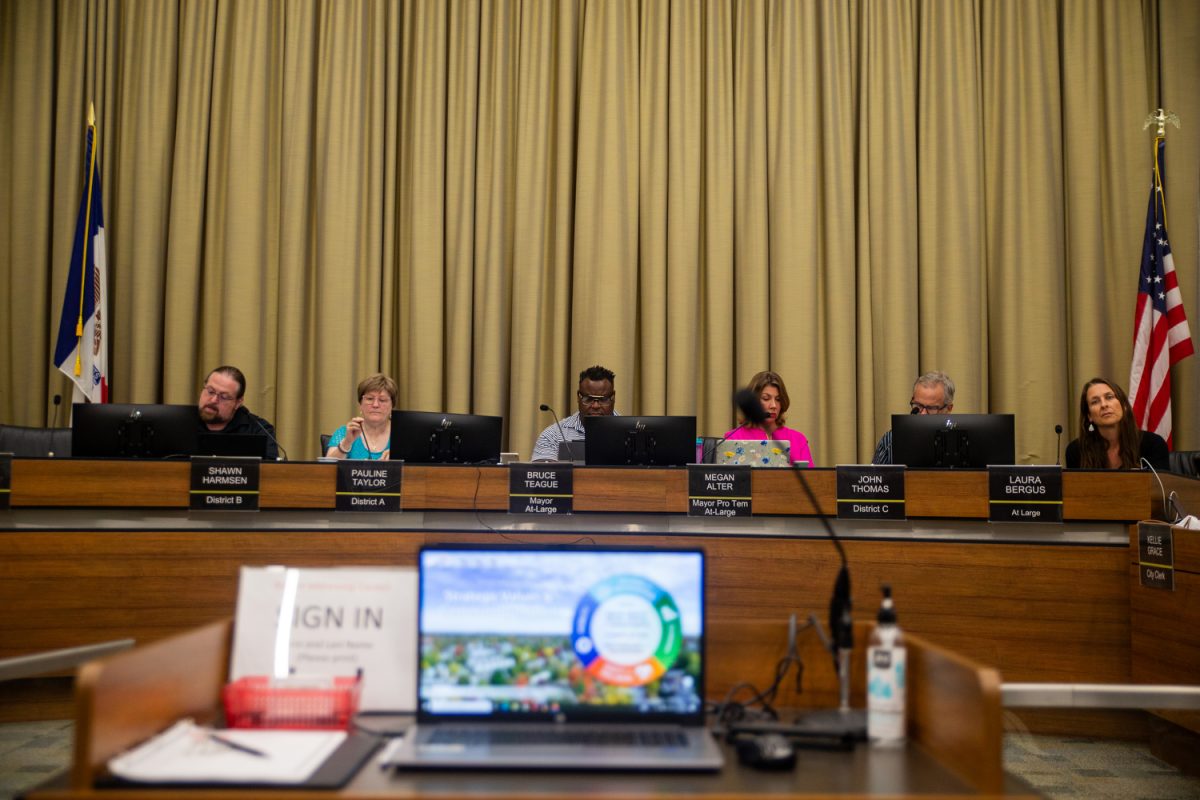Zoning has been discussed at several recent Iowa City City Council and Planning and Zoning Commission meetings, including a series of changes to the zoning code to increase flexibility and thus housing supply and affordability.
Although zoning is most frequently discussed between private developers and city staff, even a resident looking to change the exterior of their home must be aware of their city’s zoning code, Anne Russett, Iowa City senior planner, said.
“It’s not just these new apartment buildings or new subdivisions that are being developed in the city,” Russett said. “It impacts people who want to do a small addition on their property, or they want to rebuild a garage.”
At its most basic definition, zoning acts as a set of regulations for what can be built and how a building can be used on any given plot of land in the city, Russett said. The main categories that each city zone falls into include residential, commercial, industrial, and public, she said.
In each of these main categories are smaller subsets of categories that dictate the specific things that can or cannot be done within that zone as well as how a building in that zone should look.
For example, one specific zone in Iowa City’s northside is named RNS-12. RNS stands for residential neighborhood stabilization, and the number 12 represents the density allowed in the area, Russett said. In the RNS-12 zone, there are generally 12 residential units allowed per acre, she said.
Zoning also allows different categories, such as industrial and residential, to be near each other but not disrupt the well-being of one another, Jerry Anthony, an associate professor in planning and public affairs at the University of Iowa, said.
“Good zoning will allow for different kinds of land uses that are compatible with each other to coexist, for flexibility in building within parcels in the zone, and yet maintain the health, safety, and welfare of people living within the zone and outside,” Anthony said.
There are occasionally instances where the future development goals for a plot of land have changed over time, which then calls for what is known as “rezoning.” Rezoning means changing the zone category of a plot of land to facilitate a new use for it.
A recent example of this occurring in Iowa City was the rezoning of the old Kirkwood Community College campus from public to industrial. Since the campus is no longer being used as an educational facility, a developer approached the city with an application to rezone the land to allow them to construct an industrial building in the future.
When an area needs to be rezoned, city staff gather information on the rezoning to present to the Planning and Zoning Commission. The commission then votes to approve or deny the rezoning request. The vote then goes to the city council for them to make the final, regulatory decision on whether or not to go through with the rezoning.
A city’s zoning code also reflects the city’s development goals and values. For example, the City of Cedar Rapids is one of the biggest industrial employers in the state, so a large portion of the southern part of the city is industrially zoned, Seth Gunnerson, the Cedar Rapids’ zoning administrator, said.
A value that is present in Iowa City’s zoning code is that of sustainability and environmental protection. Russett said rules within the code regulate what kind of developments can take place near environmental resources, such as forests or streams, to protect them.
RELATED: Iowa City begins process to update comprehensive plan
When making zoning decisions, Iowa City uses a document known as a comprehensive plan to guide what choice it should make. The comprehensive plan is not regulatory like the zoning code is, but it contains the different goals the city has for its future land use.
The city is in the process of overhauling its comprehensive plan to better reflect the city’s modern goals and values. This kind of overhaul has also happened in nearby cities, such as Cedar Rapids — which completely redid its comprehensive plan in 2018, Gunnerson said.
The concept of zoning has been present in the U.S. for around a century. Anthony, the planning and public affairs professor from the UI, said zoning was first solidified as something cities could do in the 1926 U.S. Supreme Court case of Village of Euclid v. Ambler Realty Company.
Iowa City may have even been one of the first cities to adopt a zoning code. Russett said there are zoning documents in the Iowa City clerk’s office that date back to the 1930s.



